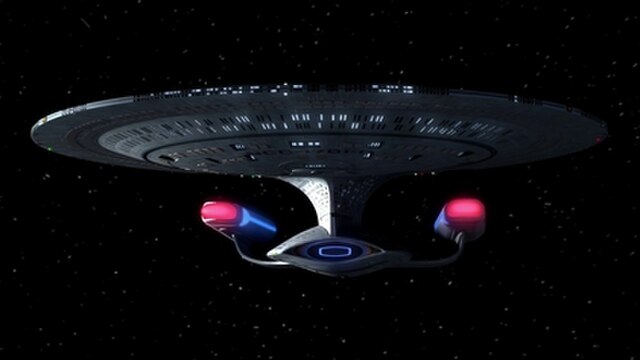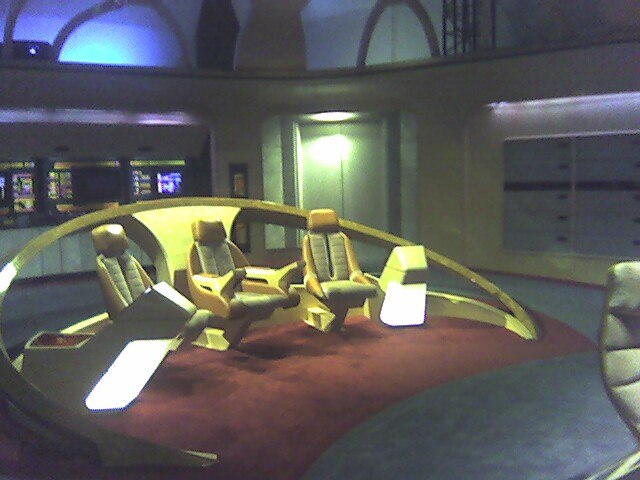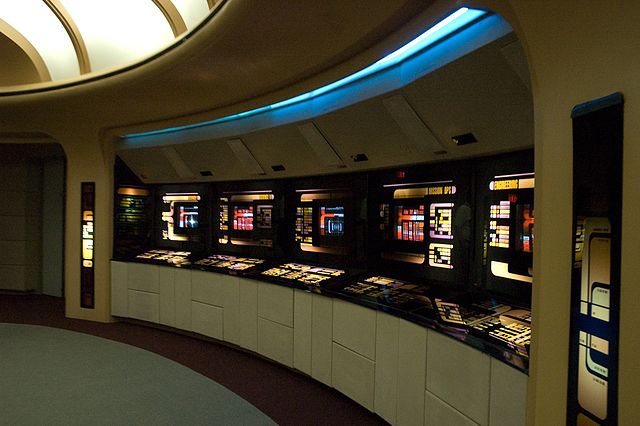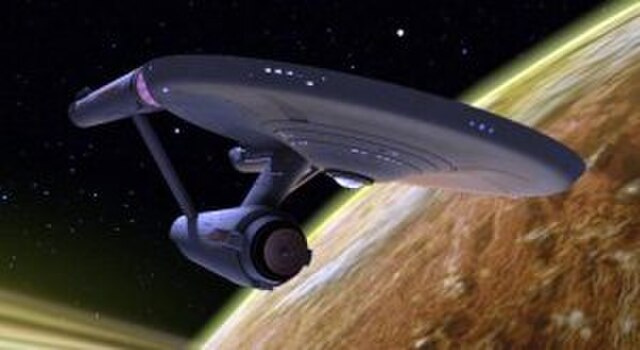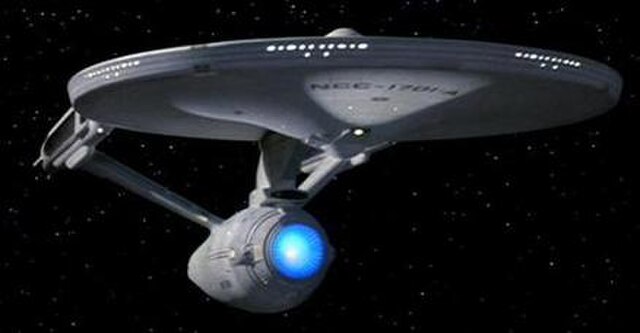USS Enterprise (NCC-1701-D)
USS Enterprise (NCC-1701-D), or Enterprise-D, to distinguish it from other vessels with the same name, is a starship in the Star Trek media franchise. Under the command of Captain Jean-Luc Picard, it is the main setting of Star Trek: The Next Generation (1987–1994) and the film Star Trek Generations (1994). It has also been depicted in various spinoffs, films, books, and licensed products.
The USS Enterprise in the series finale of Star Trek: Enterprise, "These Are the Voyages..." (2005)
The main bridge was replicated for Star Trek: The Exhibition. The Next Generation bridge set was just as wide and only two feet deeper than the original series' bridge set.
The Enterprise's saucer section plummets into a planet's atmosphere in Star Trek Generations (1994). The crash landing sequence was inspired by an illustration in a technical manual for the show's writers.
Bridge stations as seen at Star Trek Experience at the Las Vegas Hilton
Enterprise or USS Enterprise, often referred to as the Starship Enterprise, is the name of several fictional spacecraft, some of which are the main craft and setting for various television series and films in the Star Trek science fiction franchise. The most notable were Captain James T. Kirk's USS Enterprise (NCC-1701) from the original 1960s television series, and Captain Jean-Luc Picard's USS Enterprise (NCC-1701-D) from Star Trek: The Next Generation.
XCV 330
NX-01, main setting of Star Trek: Enterprise
NCC-1701
NCC-1701-A

